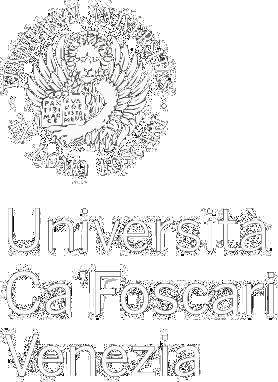
- search 946 views
- file_download 131 download
- keyboard_capslockmetadata
-
mark_email_readIscriviti alla newsletter
A Driving Force
On the Rhetoric of Images and Power
a cura di
abstract
The volume comprises a selection of papers presented at the 5th Postgraduate International Conference organized by the Department of Philosophy and Cultural Heritage of Ca’ Foscari University of Venice (Venice, 4-6 October 2023): A Driving Force. On the Rhetoric of Images and Power. In the introduction to his well-known The Power of Images (1989), David Freedberg claims not only that images hold power over us, but they are also, inevitably, related to ‘power’ itself. Art is therefore a powerful and non-neutral tool. Its forms and expressions influence and manipulate the realm of the real. Throughout human history, the artist’s creative power gave form, substance, and meaning to otherwise inert matter. This process turned the artist into a demiurge. Furthermore, once images are given their final form, they circulate and live a life of their own. The 5th Postgraduate International Conference was aimed at investigating the rhetorical nature of the intersection between image and power. In 1979 Yuri Lotman claimed that “rhetoric” is the displacement of the structural principles of a given semiotic sphere into another semiotic sphere. The Tartu semiologist’s approach implies that the “correlation with different semiotic systems gives rise to a rhetorical situation in which a powerful source of elaboration of new meanings is contained”. In exploring these meanings from a multidisciplinary perspective, this volume investigates two main themes: the power of the image, as an autonomous device, endowed with a pervasive and persuasive character; the image as a form for representing power which addresses questions concerning the sense of authority, and its negation, namely a sense of dissidence and counter-narrations.
-
Keywords keyboard_arrow_down
Lucerne • French Revolution • Polish-Lithuanian Commonwealth • Visual Culture • Authority • Italy • New Media Installation Art • Jan Fryderyk Sapieha • Macedonia • Iconography • Geographical personifications • Fascism • Venice Biennale • Un’Ambigua Utopia • Latin faith • Venice • Byzantine sculpture • Sursock Museum • New Formalism • Coronation of Miraculous Images • Gaze • Sapieha family • Speculative Design • Labour of love • Warfare • Alternative press • Folklore • The Peggy Guggenheim Collection • Modern Art History • Countersurveillance Fashion • Religious submission • Materialism • Our Lady of Kodeń • Autotheory • The Bureau of Melodramatic Research • Symbols • Distorted portrait • Postcolonialism • Dissidence • Politics • Design • Power representation • Countersurveillance fashion • Aby Warburg • Optic Nerve • Contemporary art • Palazzo Madama, Torino • General intellect • Gendered bodies • Surveillance • Pietro Aretino • Byzantine Empire • Visual culture • Image theory • Beirut • John V Palaiologos • Saint George • Occupational realism • Holbein • Arts • Socially engaged art • Second Post War Period • Modern art history • Russian style • Speculative design • Poor power Images • Sixteenth-century Italian art • Cittadini originari • Historiographical bias • Political iconology • Decoloniality • Kustar • Scuole Grandi • Directory • Political iconography • Image and power • Palaiologan Renaissance • Vittorio Viale • Semiology • Neoliberal imaginary • Technology • Power of the images • Nicolas Ibrahim Sursock • Arts and crafts • Power • Exhibition • Feminist art • National image • Poor power images • Salon d'Automne • Post-representation • Revolutionary festival • Allegory • Image • Russian Empire • Visual identity • Melodrama • New media installation art • Painted facade • Public sphere • <p>Kustar • Renaissance • Sex • Metaphor • Salon dʼAutomne • Crossmapping • Post-Representation • A/traverso • Rhetoric • Kodeń • Portrait de la jeune fille en feu • Propaganda • Byzantine empire • Paraesthetics • Drone • Portrait de la jeune fille en few • Lebanon • Wood • Wearable technologies
Sommario
- search 29 view
- file_download 9 download
Self-Definition and Self-Questioning: Image-Making as a Political Tool
- search 23 view
- file_download 11 download
- search 80 view
- file_download 11 download
Artistic Expression and Political Power in Late Medieval and Renaissance Venice
- search 33 view
- file_download 11 download
- search 91 view
- file_download 19 download
- search 40 view
- file_download 8 download
Me, Myself and I: Reframing the Concepts of Identity and Otherness
- search 84 view
- file_download 12 download
- search 55 view
- file_download 13 download
Art, Patronage, and Prestige: Visual Representations of Power in the Modern Era
- search 73 view
- file_download 14 download
- search 89 view
- file_download 30 download
Your Gaze Hits the Side of My Face: On the Image as Social Response and Counterculture
- search 50 view
- search 31 view
Unveiling Perception: Altered Reality Through Surveillance and AI Imagery
- search 34 view
- file_download 4 download
- search 58 view
- file_download 7 download
Symbolism and Identity in Ancient Societies: Negotiating Power Through Material Culture
- search 51 view
- file_download 10 download
Crossing Boundaries: Exploring Interdisciplinary Practices and Moving Images
- search 105 view
- file_download 16 download
- search 54 view
- file_download 15 download
Cultural Institutions and Power: On the Relationship Between Museums and Politics
- search 67 view
- file_download 21 download
- search 58 view
- file_download 15 download
Let Me Be Your Eyes: Investigations into the Phenomenology of Control
- search 55 view
- file_download 9 download
- search 35 view
- file_download 8 download




